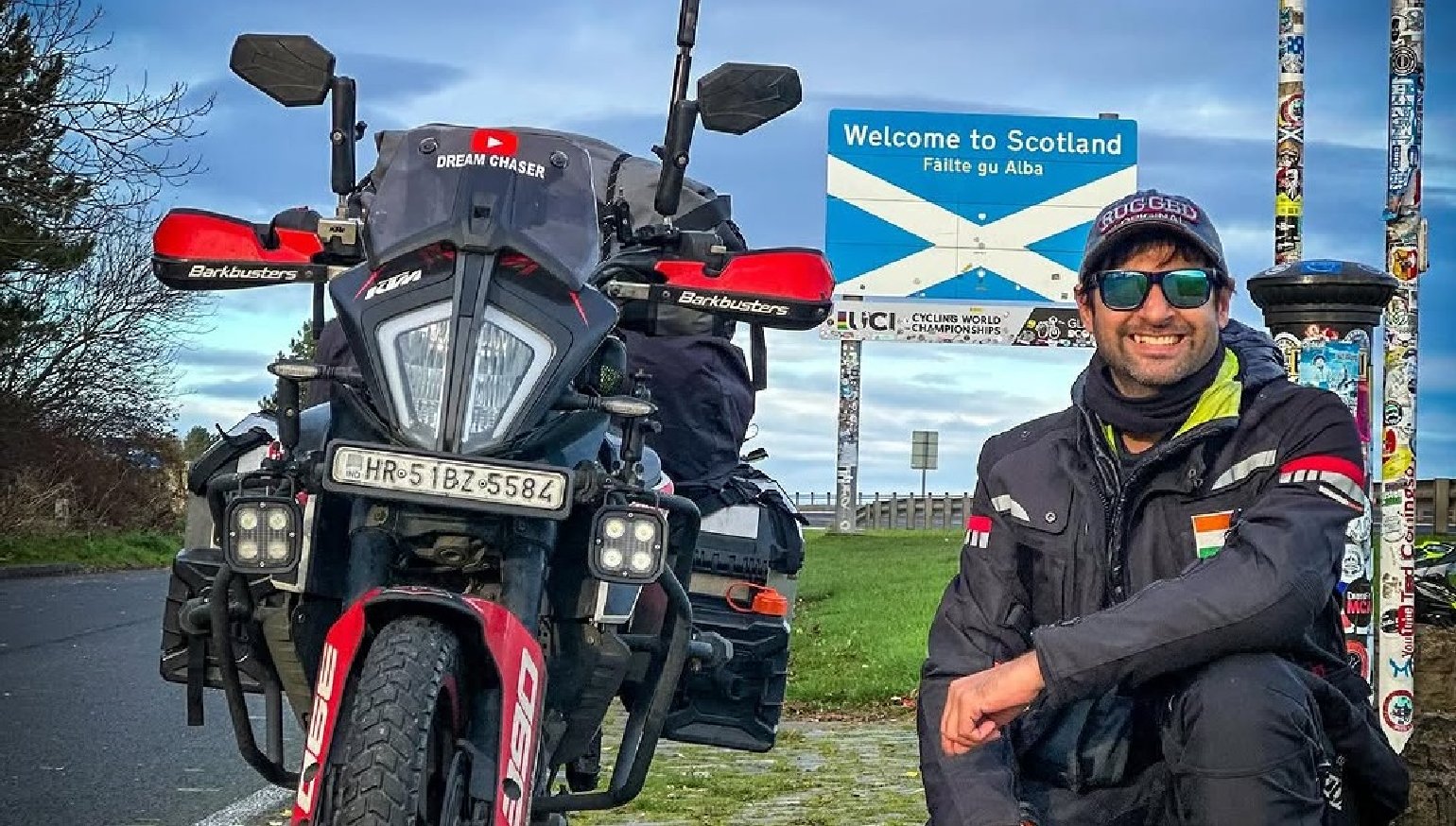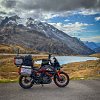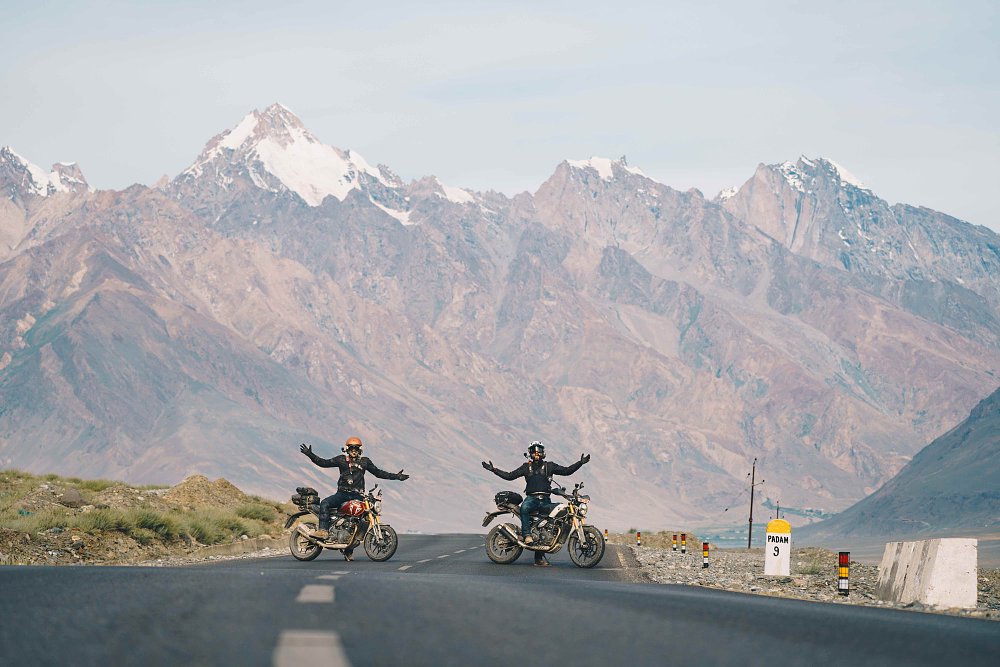When you think of long-distance motorcycle travel, the image that often comes to mind is a massive adventure-touring bike like a BMW R 1250 GS or a Honda Africa Twin. But what about exploring the world on a smaller, more affordable motorcycle?
Many have done it, and one of them is Ankit Lamba, an international rider and motovlogger known as "Dream Chaser." Riding his KTM 390 Adventure, Ankit has covered over 110,000 kilometers (68,350 miles) across 46 countries, including a 25,000-kilometer Euro Middle East Odyssey and a 20,000-kilometer Northern Lights Odyssey. His experience shows that you don't need a big bike to set out on epic journeys.
Ankit has documented his travels on Instagram. While his YouTube channel features content primarily in Hindi (often with English subtitles), his stunning visuals and on-road experiences are still worth checking out for anyone inspired by his story.
His experiences offer valuable insights into the advantages of traveling on a smaller motorcycle — lessons that might inspire riders to rethink their gear and hit the road without breaking the bank. He explained to me three advantages of traveling on a smaller motorcycle, as well as some challenges he has found ways to overcome.
Advantage: More money for travel, less for the bike
One of the most compelling reasons to opt for a smaller motorcycle is cost. Smaller bikes like the KTM 390 Adventure are significantly cheaper to purchase than their larger counterparts. This leaves more room in your budget for the actual travel — accommodation, food, experiences, and even gear upgrades. Ankit also points out that smaller bikes tend to be more fuel-efficient. Over long distances, these savings add up, making small motorcycles a practical choice for budget-conscious travelers.
Advantage: Easier handling in challenging conditions
Smaller motorcycles excel in maneuverability, especially in tight or unpredictable environments. Whether navigating crowded city streets, narrow mountain roads, or rough off-road trails, a lighter bike is easier to control. Ankit recalls riding through challenging terrains like the Keran Valley near the India-Pakistan border and the Manang Valley in Nepal.
"The lighter weight and compact design of the KTM 390 made it much easier to handle bumps, dirt trails, and tight corners," he says. This agility also extends to urban environments. In cities with heavy traffic or poorly maintained roads, a smaller bike can be a lifesaver. "You can weave through traffic or park in tight spaces without the stress of handling a heavier machine," Ankit adds.
Some of those conditions can be seen in the series of photos Ankit posted on Instagram (below) when his KTM, which he calls Charlie, surpassed 100,000 kilometers.
Advantage: Lower carnet deposit fees
For international travelers, the Carnet de Passage — a customs document required for temporarily importing a vehicle — can be a significant expense. The deposit for a smaller bike like the KTM 390 Adventure is substantially lower than for a larger, more expensive adventure bike. "For my 390 cc bike, valued at around 5,000 Euros, the deposit was only 2,500 Euros," Ankit says. "Compare that to a BMW 1250 GS, where the deposit could be as high as 12,000 Euros. That's a huge difference, especially for long-term travel."
Of course there are challenges that come with traveling on a smaller machine, too. The key to meeting them is planning, Ankit has found.

Disadvantage: Less power, lower speed, carrying capacity
Naturally, smaller engines lack the raw power of larger bikes, which can be a limitation on highways or steep climbs. "The KTM 390 can comfortably cruise at 120 km/h (75 mph), but on long climbs or at higher altitudes, you'll feel the engine working harder," Ankit explains. The key, he says, is choosing routes where he can to maintain a sustainable pace to avoid pushing the bike beyond its limits.
Loading a small motorcycle with the gear needed for a long, multi-country ride also requires some planning. Ankit's experiences in the Keran Valley and Manang Valley highlight the importance of riding slowly and being prepared for bumpy roads, especially when heavily loaded.
Disadvantage: Physical demands on the rider
Long-distance riding on a smaller bike can be physically demanding. Smaller motorcycles often have less comfortable seats and fewer amenities than larger adventure bikes. Again, Ankit says it's about patience and planning.
"I made sure to take regular breaks, stretch, and stay hydrated," Ankit advises. "It's all about planning your ride and listening to your body."

The challenges of long solo trips are not just physical, either. Each new and unfamiliar culture presents its own puzzles to be solved, and adaptability is key.
"Every country has its own challenges, but that's part of the adventure," he says. "Your love for the journey and the adventure should drive you. Without genuine passion, it's difficult to stay committed."
His conclusion is that planning, adaptability, and a true desire for the adventure ahead are more important than the number of cubic centimeters in your motorcycle's engine.
“A smaller bike can take you just as far, if you’re willing to adapt and plan carefully,” Ankit says.
If you've been dreaming of hitting the open road but feel held back by the cost or size of your bike, take a page from Ankit's book. With the right mindset and a smaller motorcycle, the world is yours to explore.

 Membership
Membership








